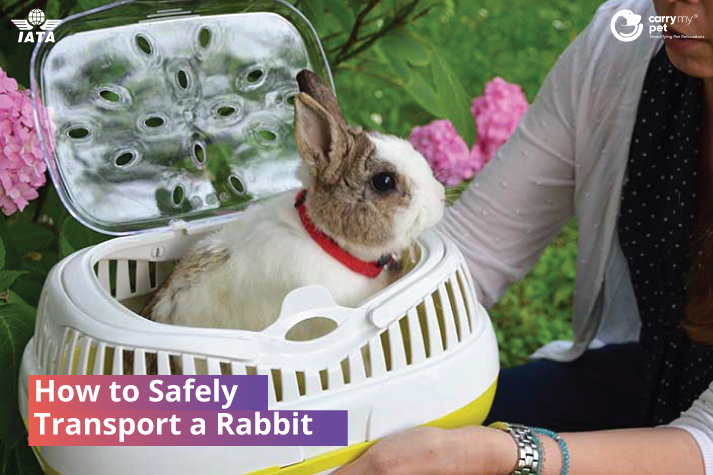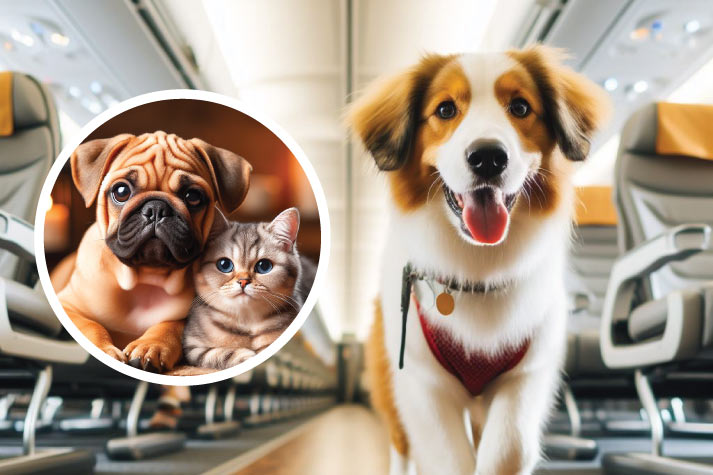
23 Oct
How to Safely Transport a Rabbit
Rabbits are adorable creatures. Famed for their beautiful fur, their agile
movement, and their characteristically long ears, they are extremely sociable
animals. They are also increasingly being kept as pets; however, if you are
about to do so, it is important to understand certain aspects of the rabbit
ownership process. Read on to find out everything you need to know about how to
care for and transport a rabbit. Rabbits are comparatively smaller than cats or dogs, so logically, you may think
they are ideal pets for smaller houses or in ones which have children. However,
this is not the case; they must be handled with care, as they are as delicate as
they are adorable. For instance, carrying them by the scruff of the neck or by
their ears can cause serious damage to their neck and spine. To safely carry a
rabbit, support their back with your elbows, while maintaining a grip on their
shoulders to prevent them from running away. You may also tuck their head into
your elbow, which helps if your surroundings are causing your bunny distress.
They are also famously destructive if your house is not rabbit-proofed, so keep
that in mind as well. The next thing to note is the demeanour of a rabbit. A rabbit is not a social pet
like, for example, a dog, which means they are rather easily stressed out. From
having too many people around them, loud noises, and the honking of horns, to
excessively lit areas, rabbits are stressed out by stimuli, whether that
stimulus is nose, light, or vibration. This is the reason the transportation of
rabbits requires a great deal of care, as they much prefer being at home happily
bouncing about, rather than heading to the great outdoors. That being said,
occasionally a circumstance will arise where your rabbit will have to exit their
comfort zone and venture out to be transported, and it is essential to be
prepared to ensure their safety. Your rabbit travelling isn’t a rare occasion. They will have to visit the
vet at least annually, so as an owner, the onus is on you to be prepared for
this eventuality. To safely transport a rabbit across longer distances, you will
first need to source a crate. A good pet crate is properly ventilated, is
spacious to allow your bunny to move, and is strong in its build. An important thing to note before travelling anywhere, via any mode of
transportation, is crate training. Your rabbit will be spending a significant
time inside their crate when in transit, so it is paramount to their safety and
comfort that they are accustomed to it beforehand. Crate-train your bunny to
reduce the stress they may face from being in an unfamiliar environment. Let
them interact with the crate by themselves; put a few of their toys and blankets
inside it, and eventually, they should be comfortable with being inside the
crate for extended periods. The same process should be followed for the car. Start by simply sitting in the
car, with your pet in the crate, without driving anywhere. Repeat the process of
acclimation and ease your pet into longer and longer journeys, until the event
does not actively cause them any undue stress. While stopping for bathroom
breaks or fuel stops, always make sure your pet is secure before opening any
doors or windows. New sights and smells may overwhelm your pet in an unfamiliar
setting, so make sure to keep them restrained while in a moving vehicle. Make
sure to keep your car air-conditioned, as temperatures of over 24 degrees
Celsius are not advisable for rabbits. The procedure for rail travel is similar to road travel, the only exception being
the booking arrangements. Plan and check if railways pet-friendly because
chances are you will have to reserve an entire compartment for the two of you.
The rest is fairly simple; as with road travel, crate training is important, and
should be done in advance. Alongside crate training, social training is
suggested as well. Socially training your pet will prevent them from being
overwhelmed by the sights and smells, and the hustle and bustle of daily human
life, and will keep them calm for the duration of the journey (an especially
important step, as rabbits are easily stressed out). Railways are not the fastest mode of transportation, but they can often reach
relatively obscure corners of the country while being cost-efficient, so
depending on your needs, it may suit you. However, longer travel times equals
longer hours inside a crate on the move, which may not be the best thing for
your bunny’s health. Rabbits can be flown by air, although the experience will not be the rosiest.
While travelling is stressful for a rabbit, air travel is the fastest method of
moving from one location to another, so consider that. Depending on your
airline, your bunny may be allowed in the cabin as excess baggage, or in the
cargo hold as manifested cargo. It is important to specify the plane you’re flying in to have a temperature
and pressure-controlled cargo hold. A good animal travel company can verify if
an airline has a reliable reputation for transporting pets and if their plane
has a temperature-controlled cargo hold. Such a company can also ensure adequate
hydration prior to take-off. Crate training is paramount to reduce stress as with every other mode, as is
hydration. Rabbits are fragile creatures, so travelling with them is not often
recommended. However, if you must, choose the mode with the shortest possible
travel time, preferably one where you can see your pet. Travelling will stress
out your pet in any case, so it depends entirely on your situation and distance
to your destination to minimize any stress your pet may face.How to Handle a Rabbit
By Road
By Rail
By Air






AUTHOR’S BIO
Carry My Pet
Passionate pet enthusiasts and globetrotters, dedicated to easing furry friends' journeys worldwide. Penning tales of compassion at CarryMyPet, where every relocation is a tail-wagging adventure.